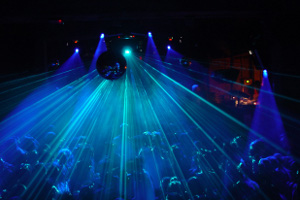 Perhaps no single development of the last century has been more influential or more important than the laser.
Perhaps no single development of the last century has been more influential or more important than the laser.
The concept of discovery is a powerful sentiment in science. Television’s Discovery Channel and print journalism’s Discover Magazine have folded the word into their identities, and as a child that my iconic scientist was a paleontologist, literally unearthing discoveries of the prehistoric wilderness. Just as motivating, however, is the concept of invention, and perhaps no single development of the last century has been more influential or more important than the laser. In 2010 the laser turns 50, and to celebrate, a group of organizations including the American Physical Society, the Optical Society, SPIE and IEEE Photonics Society have organized a year-long series of events this year dubbed LaserFest.
UC Berkeley has been celebrating LaserFest this past week with special exhibits and events over the weekend at the Lawrence Hall of Science, and a special lecture on Monday the 25th by Roger Falcone, Bob Byer, and Nobel laureate Charles Townes, also at the Lawrence Hall of Science.
Theodore Maiman built the first laser out of a rod of pink ruby in 1960. However, the laser’s precursor and underlying principle belongs to Townes. In 1954, he and colleagues constructed the ammonia maser, a stunning proof-of-principle device demonstrating that intense beams of light within a narrow color range could be produced. A flurry of excitement and research efforts followed aimed primarily at developing masers that could work at higher and higher frequencies of light.
As maser research matured the name changed as well. A high-frequency MASER (the acronym stands for Microwave Amplification by Stimulated Emission of Radiation) became the optical MASER. Then at a conference in 1959, Gordon Gould coined it as the LASER. (LASER is an acronym for Light Amplification by Stimulated Emission of Radiation.)” One of the conference’s organizers, Arthur Schawlow, rebutted that these new devices would be more important as oscillators rather than amplifiers, so perhaps they should really be calling it the LOSER (see the recent article in Physics Today). Curiously, substituting the O never caught on.
